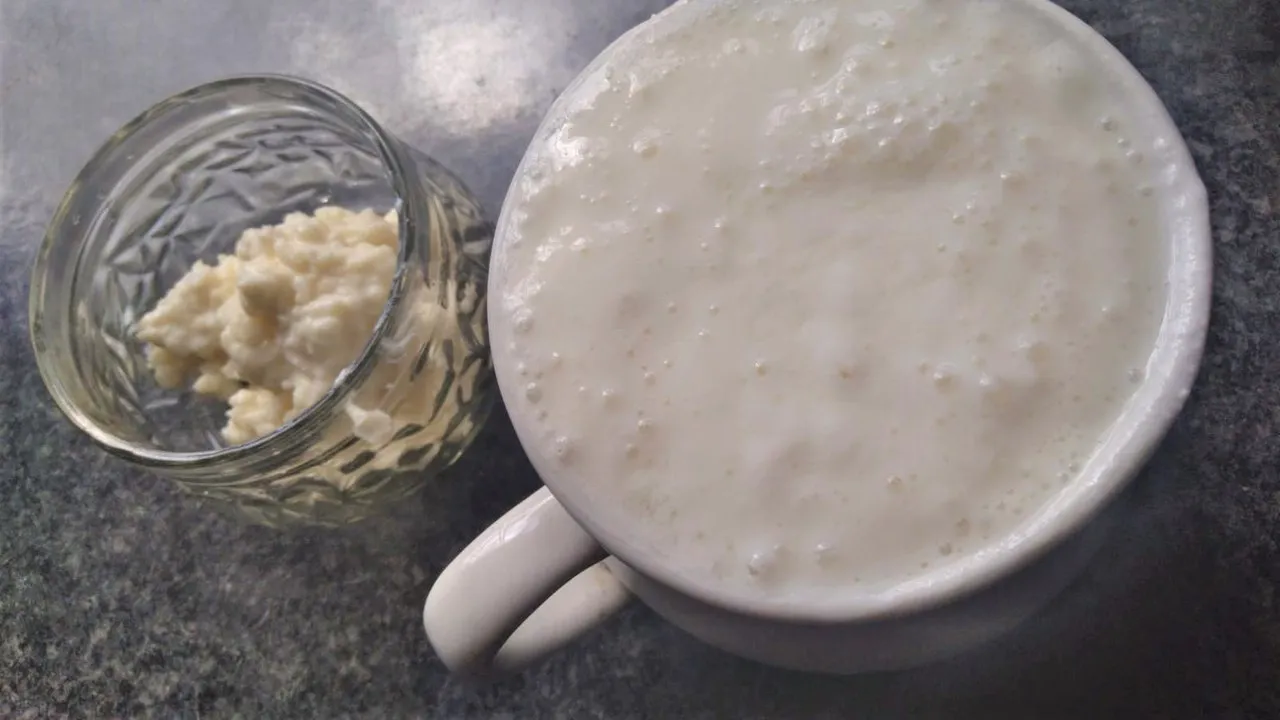
Hola a toda la comunidad de Natural Medicine y Holos & Lotus, hoy vengo a compartirles mi receta de yogurt griego de kéfir elaborado con leche entera de vaca y búlgaros de la leche.
Primero les voy a contar un poco los beneficios que tiene beber yogurt de kéfir, y luego pasamos a la receta.
Primero que nada contarles que los gránulos de kéfir son un consorcio de bacterias y levaduras que forman una simbiosis y logran transformar alimentos fermentándolos y aportándoles múltiples beneficios. Lo bueno es que no sólo se puede hacer de leches animales, sino que también se utilizan los búlgaros con leches vegetales como le leche de coco, de almendras o de avena, sin embargo se recomienda hacer una o dos tandas cada un mes con leche animal, ya que los búlgaros se alimentan de la lactosa, propiedad que no tienen las leches vegetales.
El kéfir contiene microorganismos beneficiosos para la salud, que son llamados probióticos, éstos son los mismos que están alojados en nuestros aparatos digestivos y reproductor y por lo tanto debemos mantener siempre una variedad amplia de estas bacterias y levaduras para tener una buena absorción de nutrientes, entre otros.
Además de ayudar a reforzar el sistema inmunológico, ayuda a absorber el calcio, el hierro y el magnesio; ayuda a la digestión de los alimentos; ayuda a eliminar toxinas y grasas por materia; ayuda a combatir las enfermedades digestivas como el estreñimiento, colon irritable, la enfermedad de Crohn y las úlceras; ayuda a combatir problemas óseos; ayuda a disminuir alergias y asma; ayuda a mejorar el aspecto de la piel, dientes, cabello y el bienestar físico en general cuando consumimos probióticos como el yogurt de kéfir.
Hello to the entire Natural Medicine and Holos & Lotus community, today I come to share with you my recipe for Greek kefir yogurt made with whole cow's milk and Bulgarian milk.
First I am going to tell you a little about the benefits of drinking kefir yogurt, and then we move on to the recipe.
First of all, tell them that kefir granules are a consortium of bacteria and yeasts that form a symbiosis and manage to transform food by fermenting them and providing them with multiple benefits. The good thing is that not only can it be made from animal milk, but Bulgarians are also used with plant milks such as coconut, almond or oat milk, however it is recommended to make one or two batches every month with animal milk , since the Bulgarians feed on lactose, a property that vegetable milks do not have.
Kefir contains microorganisms beneficial to health, which are called probiotics, these are the same that are housed in our digestive and reproductive systems and therefore we must always maintain a wide variety of these bacteria and yeasts to have a good absorption of nutrients, among others.
Besides helping to strengthen the immune system, it helps to absorb calcium, iron and magnesium; helps the digestion of food; helps eliminate toxins and fats by matter; helps fight digestive diseases like constipation, irritable bowel, Crohn's disease and ulcers; helps fight bone problems; helps reduce allergies and asthma; helps improve the appearance of the skin, teeth, hair, and overall physical well-being when we consume probiotics such as kefir yogurt.


Entonces ahora que conocemos varios de sus beneficios, vamos a conocer a los búlgaros, que son esos gránulos de textura gomosa que van de un color blanco a cremoso y pueden variar de tamaño según el tiempo.
Estos gránulos deben manipularse siempre con elementos de plástico o madera, nunca de metal y mucho menos de aluminio, pues al contacto mueren.
Para comenzar con un cultivo, sólo necesitamos:
- 1 o 2 cucharadas de gránulos de kéfir de leche o búlgaros
- 1 frasco de vidrio con tapa de 1 litro
- 1 litro de leche si es entera mejor (o la cantidad que deseen hacer)
PROCEDIMIENTO:
Comenzamos colocando en el frasco limpio los gránulos, luego se le agrega la leche, se tapa herméticamente y se rotula colocándole la fecha.
So now that we know several of its benefits, we are going to meet the Bulgarians, which are those gummy granules that go from a white to creamy color and can vary in size depending on the time.
These granules must always be handled with plastic or wooden elements, never metal and much less aluminum, as they die on contact.
To start with a crop, we only need:
- 1 or 2 tablespoons of milk or Bulgarian kefir granules
- 1 glass jar with lid of 1 liter
- 1 liter of milk if it is whole better (or the amount you want to make)
PROCESS:
We begin by placing the granules in the clean jar, then the milk is added, it is covered hermetically and it is labeled by placing the date on it.

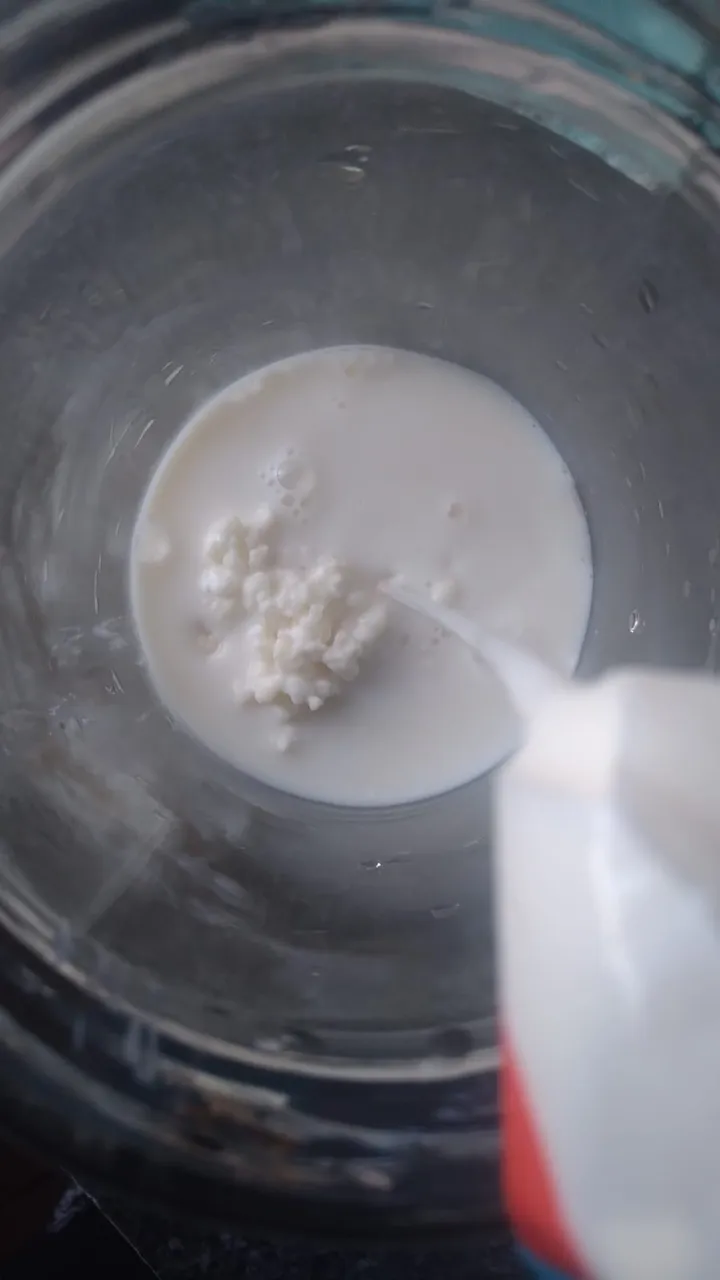

De acuerdo al clima de tu país/ciudad/región va a ser la rapidez del fermentado. Tenemos que tener en cuenta que ellos proliferan con una temperatura ideal de entre 22° y 25° centígrados, por ejemplo aquí en el Sur de América en invierno el kéfir tarda más en hacerse por el frío, yo lo suelo dejar unos 3 a 4 días. Pero ahora que ya hace calorcito, el proceso es mucho más rápido, de un día para el otro ya está listo.
¿Cómo nos damos cuenta que está pronto para colar?
Bueno podemos ver que el suero está separado del resto, algunos creen que se cortó la leche y se les puso feo, pero no es así, esta es señal que el kéfir ya está listo.
Otra forma es oliéndolo, porque vamos a sentir un olorcito como a queso y esa es buena señal también. Asique buscamos un colador de plástico y una taza como para recibir el yogurt y con una cuchara vamos a ir escurriendo suavemente los gránulos hasta que el yogurt se haya filtrado y nos queden los búlgaros en el colador.
Una vez filtrado todo el kéfir, se lava el frasco y se vuelve a comenzar el proceso. Con el yogurt podemos hacer yogures, quesos, usarlo en tortas, en batidos y no sólo en eso, también se usa en el rostro y el cabello, y en la zona de los órganos reproductores cuando hay hongos, se combaten con un poco de kéfir. No la tenían a esa, pues sí, muchos ginecólogos en el pasado utilizaban este probiótico para combatir hongos vaginales.
According to the climate of your country/city/region it will be the speed of the fermentation. We have to take into account that they proliferate with an ideal temperature of between 22° and 25° Celsius, for example here in South America in winter the kefir takes longer to make due to the cold, I usually leave it for about 3 to 4 days . But now that it is already warm, the process is much faster, from one day to the next it is ready.
How do we know that it is ready to strain?
Well we can see that the whey is separated from the rest, some believe that the milk was cut and made them ugly, but it is not like that, this is a sign that the kefir is ready.
Another way is by smelling it, because we are going to smell a little smell like cheese and that is a good sign too. So we look for a plastic strainer and a cup to receive the yogurt and with a spoon we are going to gently drain the granules until the yogurt has filtered and we have the Bulgarians in the strainer.
Once all the kefir has been filtered, the jar is washed and the process begins again. With yogurt we can make yogurts, cheeses, use it in cakes, in smoothies and not only in that, it is also used on the face and hair, and in the area of the reproductive organs when there are fungi, they are fought with a little kefir . They did not have that one, well yes, many gynecologists in the past used this probiotic to combat vaginal yeast infections.
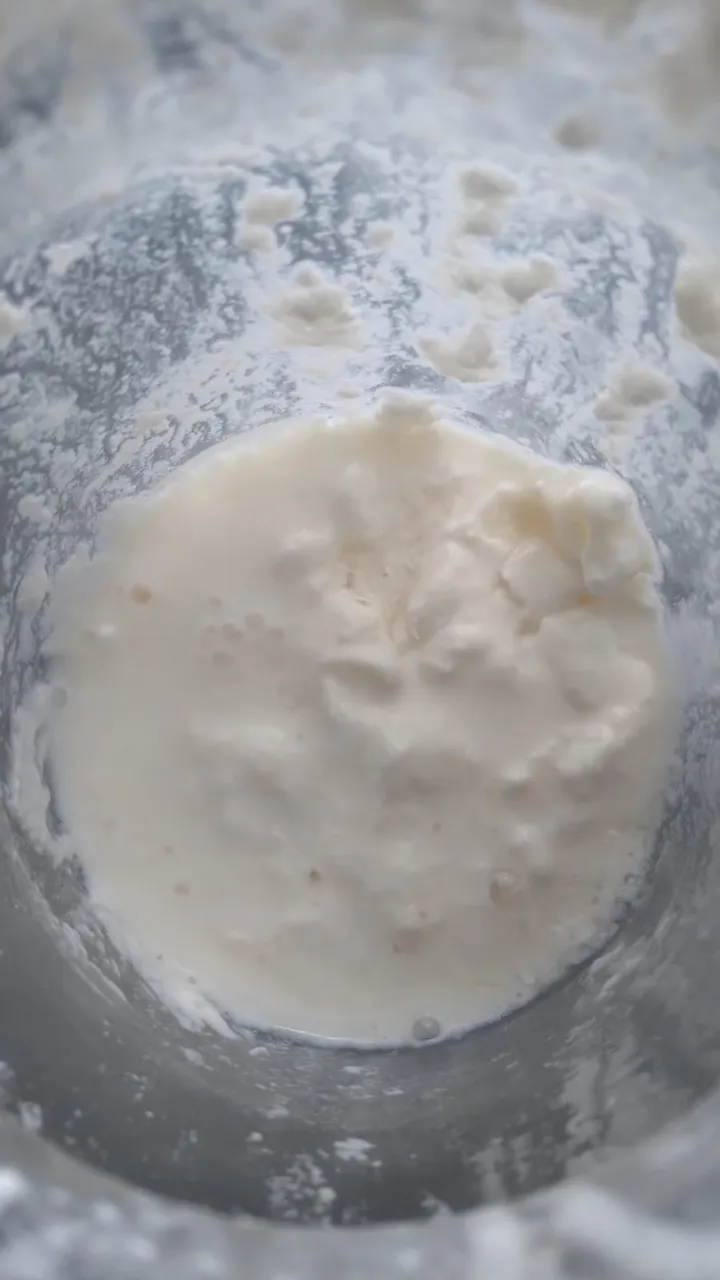
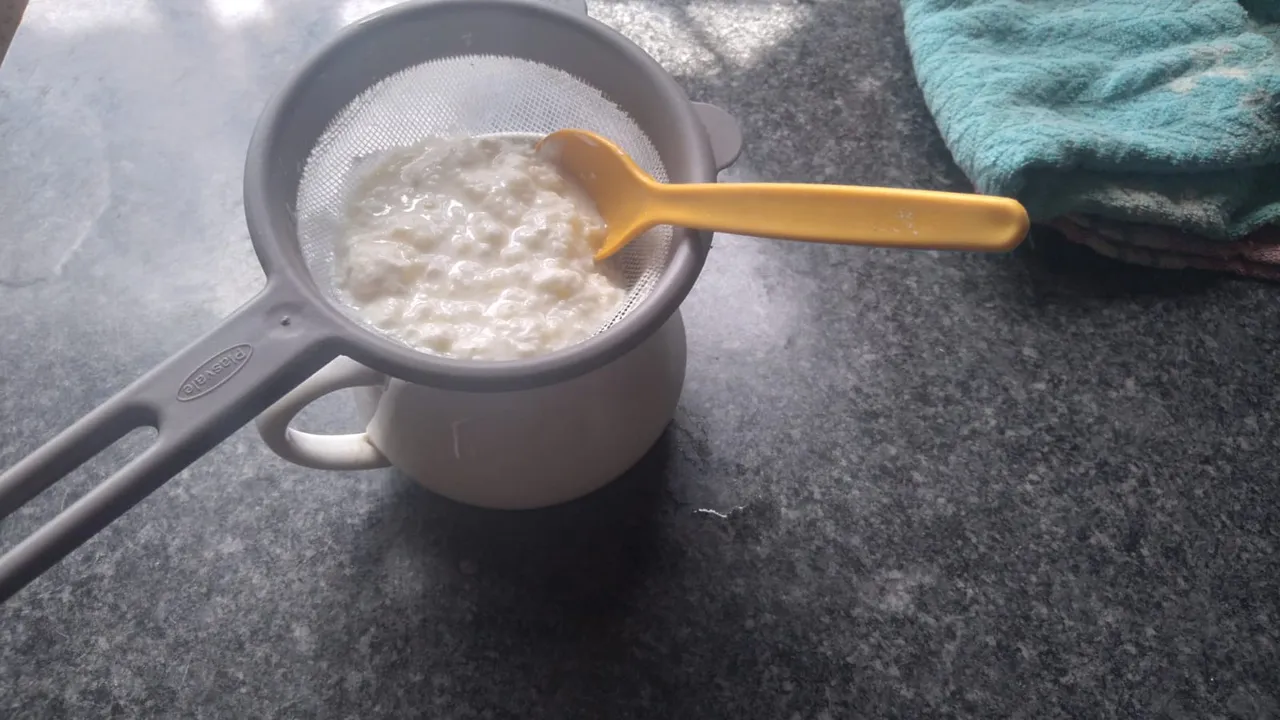
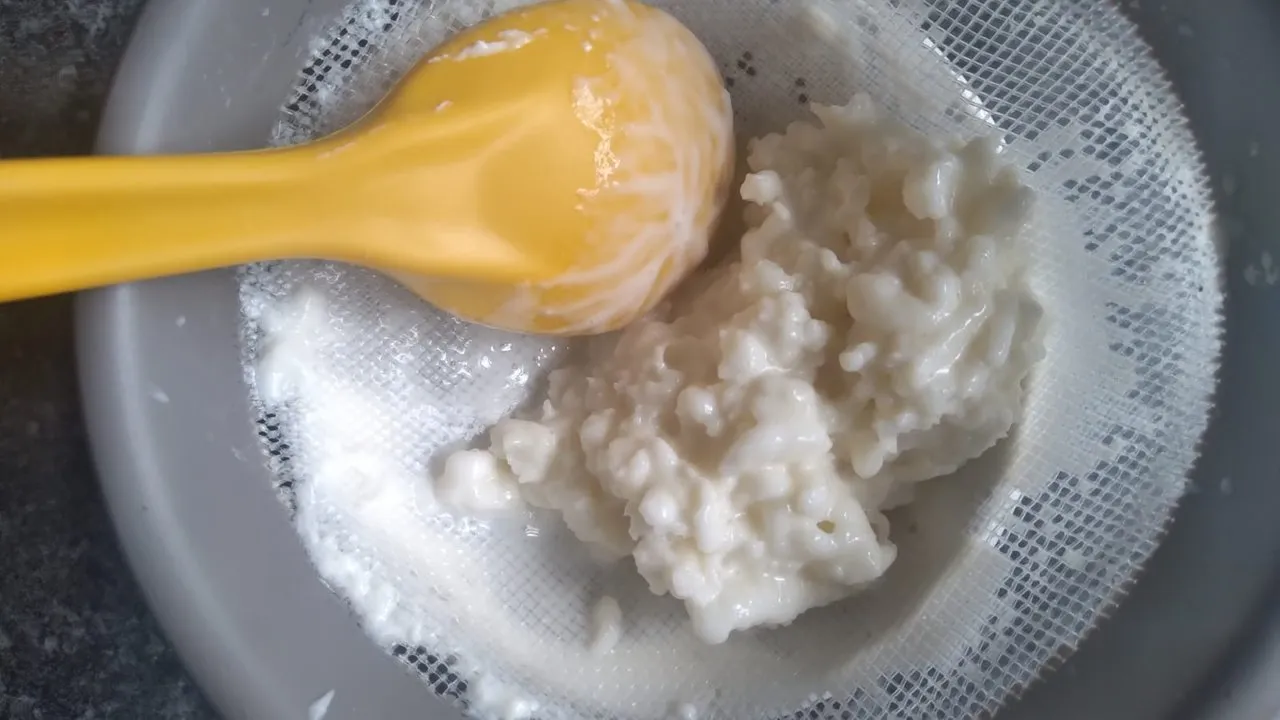
Bueno y con el yogurt griego de kéfir, una vez cosechado, puedes endulzarlo y beberlo como yogurt, puedes colocarlo en un colador de café de papel y que filtre el suero durante un par de días y hacer queso o puedes envasarlo y beberlo unos días después, si lo mantienes en la heladera puedes consumirlo al cabo de una semana que estará bien.
Well and with the Greek kefir yogurt, once harvested, you can sweeten it and drink it like yogurt, you can place it in a paper coffee strainer and filter the whey for a couple of days and make cheese or you can package it and drink it a few days later If you keep it in the refrigerator you can consume it after a week that will be fine.

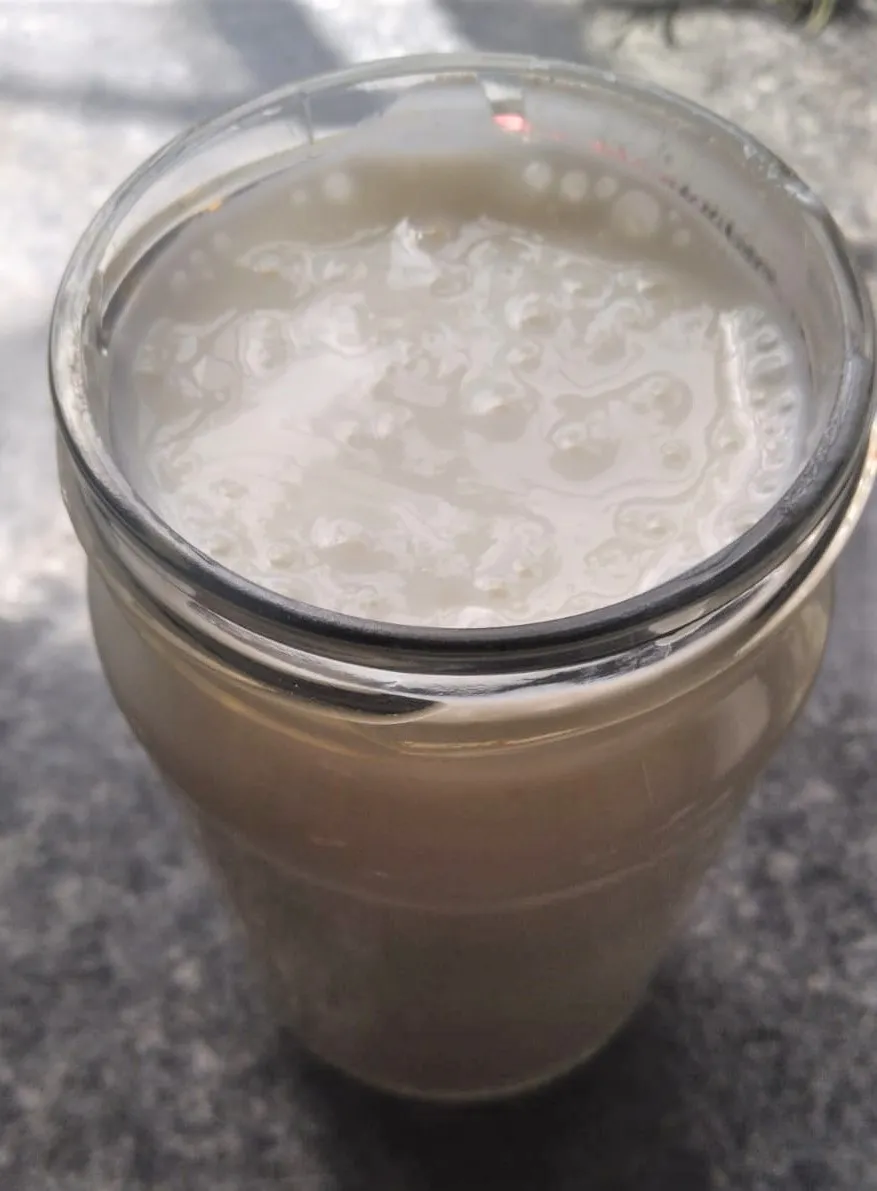
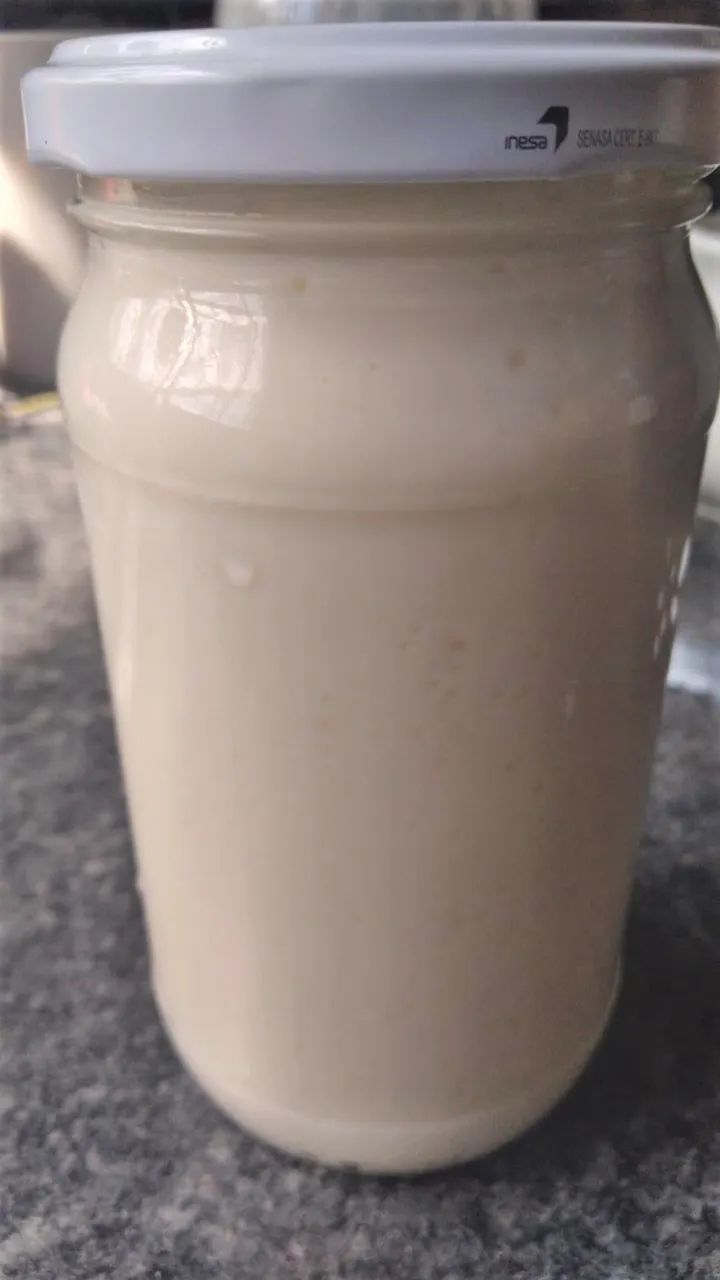
En otra receta les voy a contar cómo hacer yogurt de kéfir con frutillas de mi huerta. Por ahora es todo por hoy. Espero les haya sido útil esta información, y quien esté interesado por gránulos, tengo en mi haber, pueden pedirlo en un comentario que si están en Uruguay se los envío sin problemas!!
Las fotos son de mi autoría, las tomé con un Samsung A01.
Hasta la próxima!!
In another recipe I will tell you how to make kefir yogurt with strawberries from my garden. For now is all for today. I hope this information has been useful to you, and whoever is interested in granules, I have to my credit, they can ask for it in a comment that if they are in Uruguay I will send them to them without problems !!
The photos are my own, I took them with a Samsung A01.
Until next time!!


